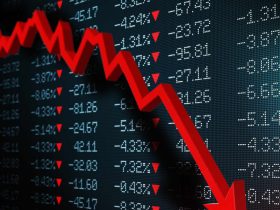It may be damning the market with faint praise, but corporate insiders are more bullish today than they were three months ago.
That’s because, in late July, insiders on balance were more bearish than they had been in years, as Barron’s reported at the time under the headline “Bear Market Ahead? Insiders Are Waving a Red Flag.” That column was published four trading days before the bull market’s closing high, and though the jury is out on whether a new bear market started then, the
Russell 2000 index
of small- and mid-cap stocks is more than 14% lower.
Corporate insiders—a company’s officers, directors, and largest shareholders—presumably know a lot more than outsiders about their companies’ prospects. The Securities and Exchange Commission requires them to immediately report whenever they buy or sell shares of their companies’ stock, and many on Wall Street slice and dice those reports to detect any trends in insider behavior.
Two of these slicers and dicers are Nejat Seyhun, a finance professor at the University of Michigan, and his son Jon Seyhun, who has created the website InsiderSentiment.com to put his father’s research into practice. Unlike some others who mine the insider data for insights, the Seyhuns focus only on transactions executed by corporate officers and directors. That’s because Nejat Seyhun found in his research that the largest shareholders don’t, on average, have any privileged insight into their companies’ prospects.
The indicator that his research found to have the greatest ability in predicting how the median U.S.-traded stock performs is based on those companies in which officers and directors have bought more shares than they sold. Nejat Seyhun expresses this proportion as a percentage of all companies for which there has been any insider buying or selling. The Seyhuns refer to this insider buying percentage as their Insider Sentiment Tracker.
For October to date, this percentage has been hovering around 20%. While that’s well above the 12% reading that prevailed three months ago, it’s also below the past 10-year average of 26%—as you can see in the accompanying chart. Nejat Seyhun says he considers the latest reading to be “neutral to pessimistic”—which translates to a weak Hold recommendation. That means that, for now, he is “cautioning against aggressive new long positions.”
Interpreting Insider Trends
Nejat Seyhun says that this weak Hold recommendation is appropriate, despite the below-average reading of the Insider Sentiment Tracker, because the “signal-to-noise ratio” is low for readings within several percentage points of the long-term average. It isn’t a good idea to make portfolio adjustments based on every squiggle in these middle-of-the-road readings, as more-extreme levels are better indicators.
The readings with the highest signal-to-noise ratio are those that are very low or very high. In research recently posted to their website, the Seyhuns measured the predictive value of readings below 20% and above 30%. Over the one month subsequent to above-30% readings over the past decade, the Russell 2000 gained an average of 3.2%. In contrast, over the subsequent month following below-20% readings, the Russell 2000 lost 0.8% on average. On a yearly basis, this difference works out to more than 55 annualized percentage points.
With the Insider Sentiment Tracker hovering around this 20% threshold, investors should be on the lookout for any significant deterioration in insider sentiment. Nejat Seyhun says that he would consider it a sell signal if the indicator finishes the full month of October below 20%.
The broader investment takeaway from the Seyhuns’ latest research is that it continues to be a good idea to pay close attention to the behavior of corporate insiders. That’s important to note, because many of the studies showing that insiders are worth following were conducted many years ago. Since there’s always the possibility that a previously profitable strategy will have stopped working because too many investors have started following it, it’s important to subject older research results to out-of-sample testing.
For now, at least, insider sentiment has passed just such a test.
Mark Hulbert is a regular contributor to Barron’s. His Hulbert Ratings tracks investment newsletters that pay a flat fee to be audited. He can be reached at [email protected].
Write to [email protected]
Read the full article here











Leave a Reply